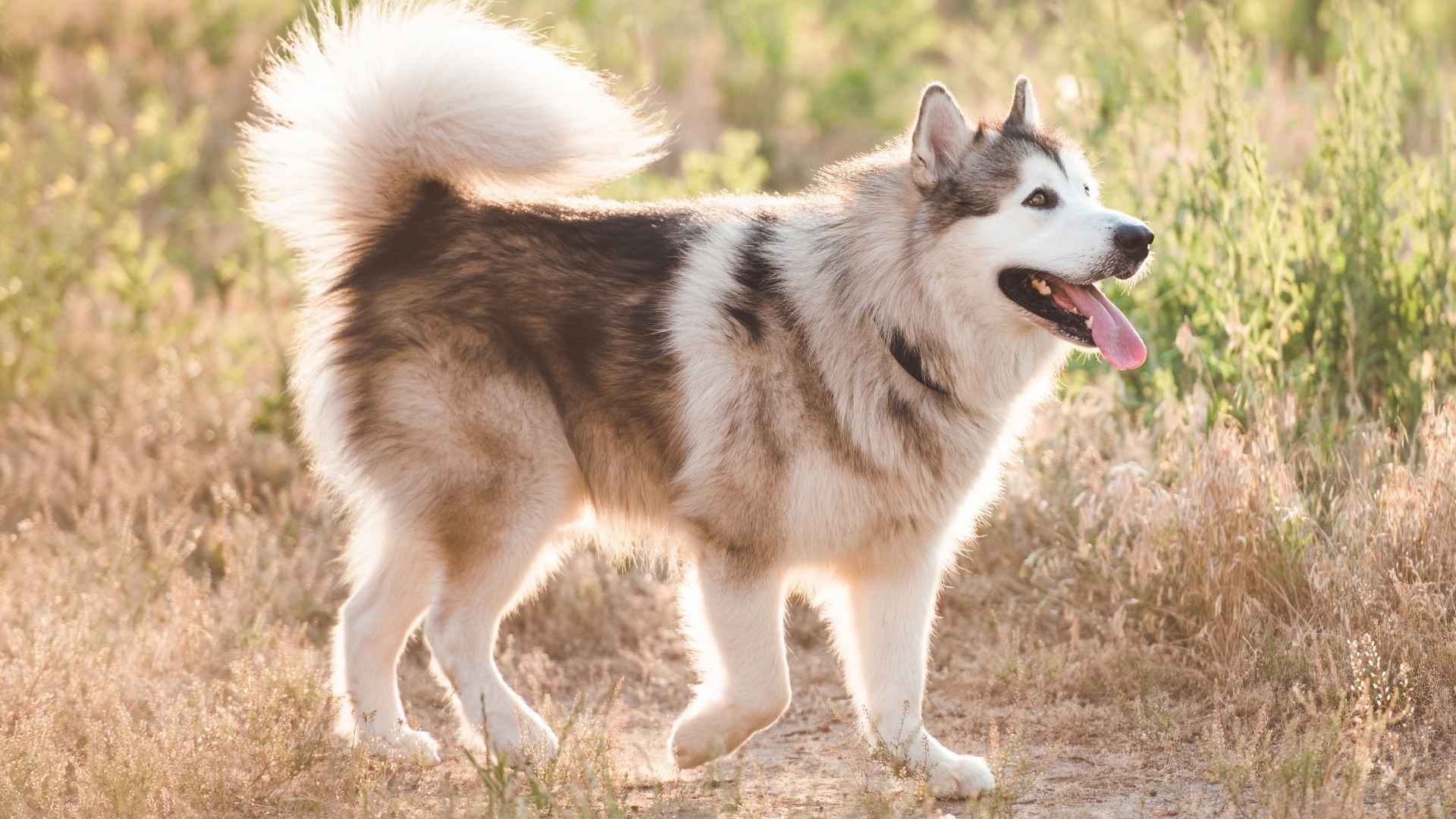I still remember the first time I saw a large wolf-dog in person. I froze. It wasn’t fear — it was respect. That fur. That stance. That stare. It looked like it belonged in a frozen forest, not someone’s backyard.
But there it was — calm, steady, loyal to its owner. That moment sparked something in me. I needed to know everything about these breeds. Over time, I discovered that behind the wild looks were dogs with deep loyalty, huge energy, and strong instincts.
Owning one isn’t for everyone, but for the right person, it’s life-changing. These dogs aren’t pets — they’re partners. They push you, protect you, and remind you every day that you’re living with something extraordinary.
If you’re curious about what it really means to own a dog that looks like a wolf and acts like a guardian, you’re in for something special. Let’s meet them.
Large Wolf Dog Breeds
1. Alaskan Malamute
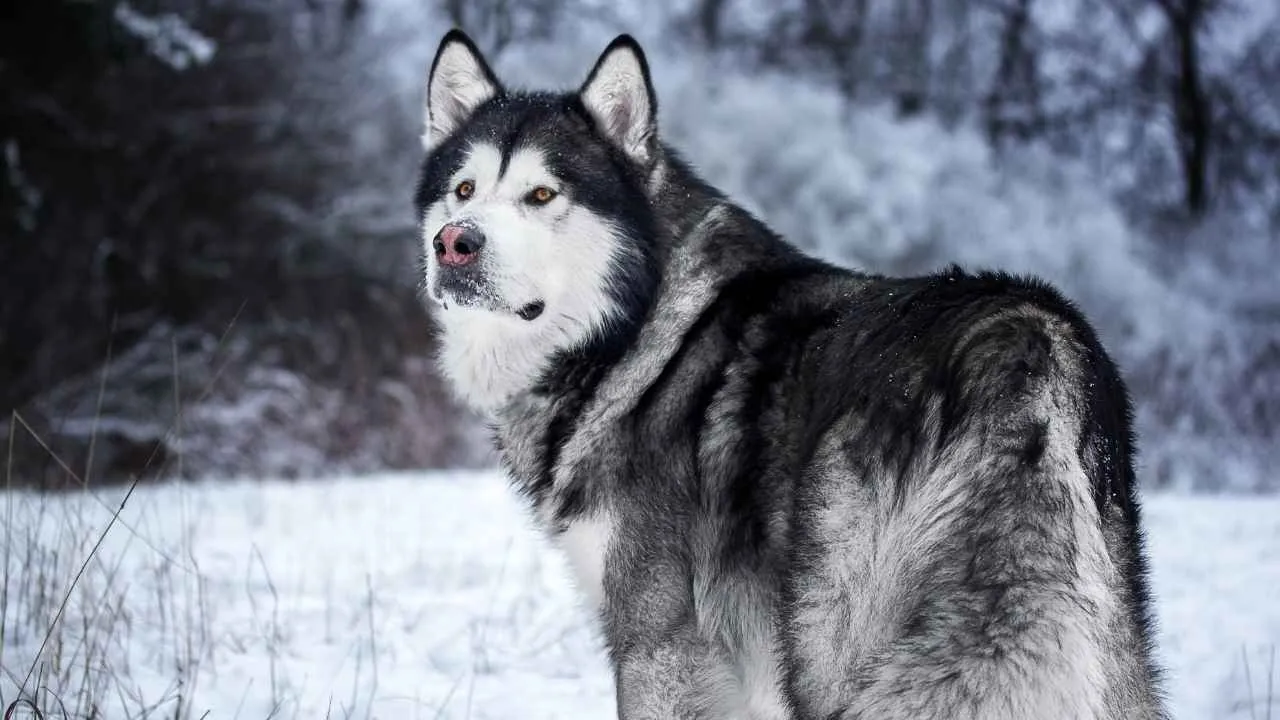
Built like a powerhouse, the Alaskan Malamute is a large, muscular breed with stamina to match. With their thick double coat, erect ears, and broad chest, their appearance often gets them mistaken for wolf like dogs, but they’re pure domestic at heart — just very rugged.
Purpose in their past
These dogs were originally bred by the native Inuit people for sled-pulling in Arctic conditions. That history still shapes their personality today. Malamutes aren’t just strong — they’re purposeful. They do best when given a task or space to explore and don’t enjoy being left alone for long stretches.
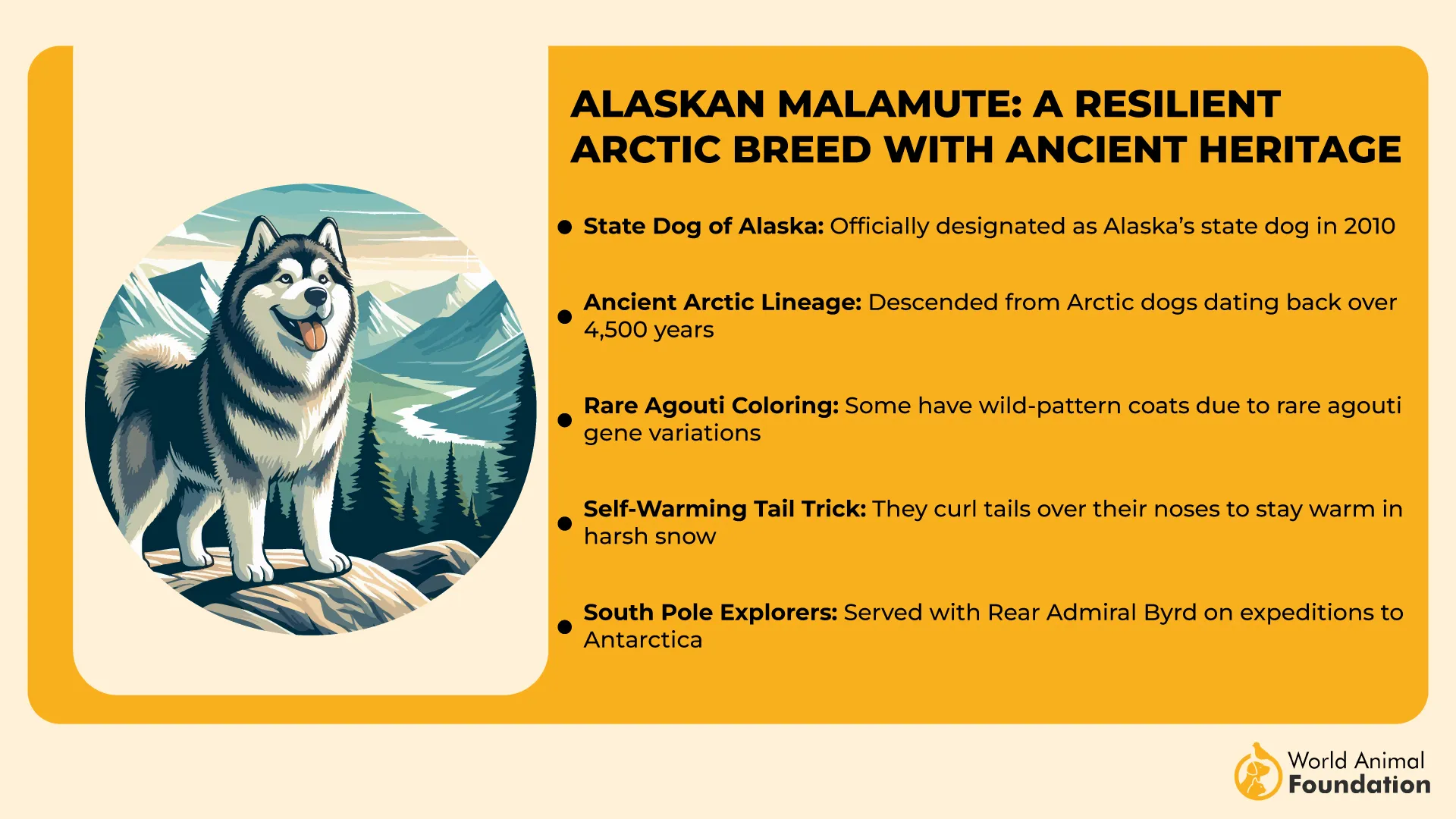
Independent minds, loyal hearts
Malamutes are known for being affectionate but not clingy. They bond closely with their families and can be incredibly loyal, yet they also like to think for themselves.
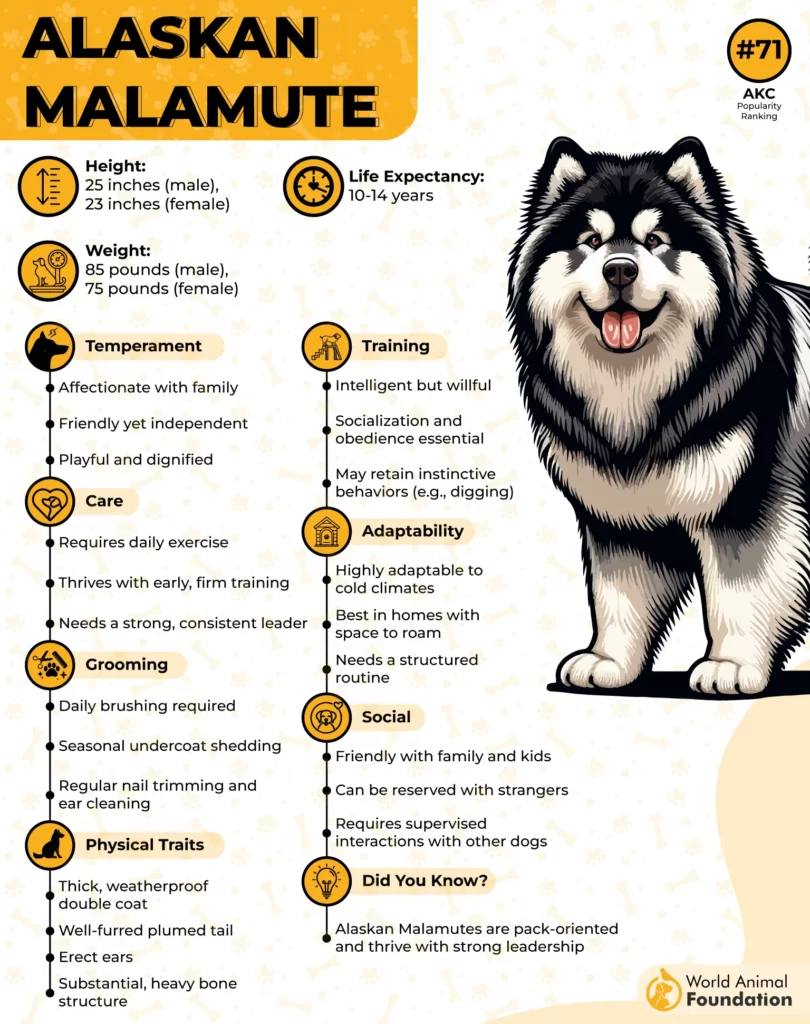
This independent streak makes early training a must, as per Hills Pet. They’re not aggressive by default, but they’re strong-willed and not ideal for first-time pets.
Grooming and energy management
That gorgeous coat sheds a lot. Regular brushing is non-negotiable, especially during seasonal blowouts.
They also need consistent physical activity to stay happy. Apartment living? Not ideal. These dogs need room to stretch both mentally and physically, making them better suited as active, outdoor-loving pets.
2. Czechoslovakian Wolfdog
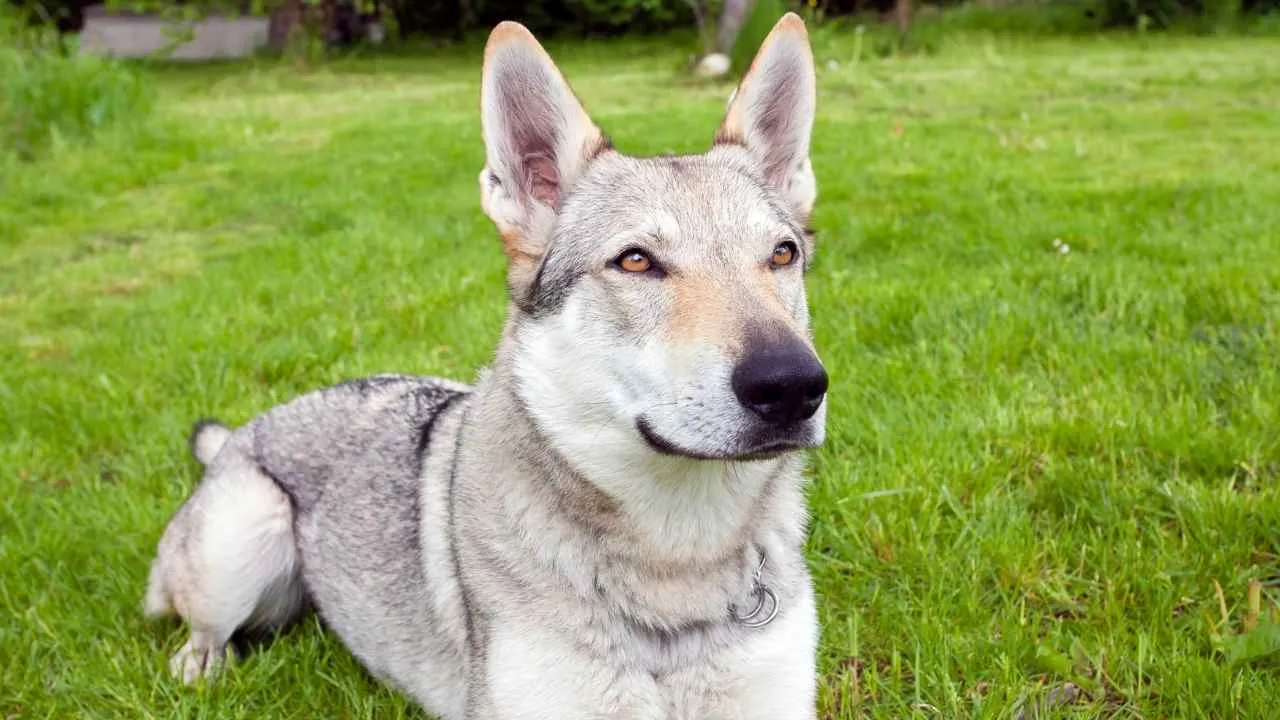
This breed isn’t folklore — it was developed in 1955 as part of a military experiment in former Czechoslovakia, crossing German Shepherds dogs with Carpathian wolves, as mentioned in Gray Farer.
The result? A controlled line of wolf-dog hybrids that retained the trainability of a working dog and the endurance of a wild predator.
Structure built for distance, not speed
Their physical characteristics are engineered for stamina. With long, lean legs, sloped backs, and large chests, they’re capable of covering vast distances without tiring, as per UKC. Their gait is light and nearly silent, more like a wolf’s than a traditional domestic dog’s — and their eyes carry that same unmistakable intensity.
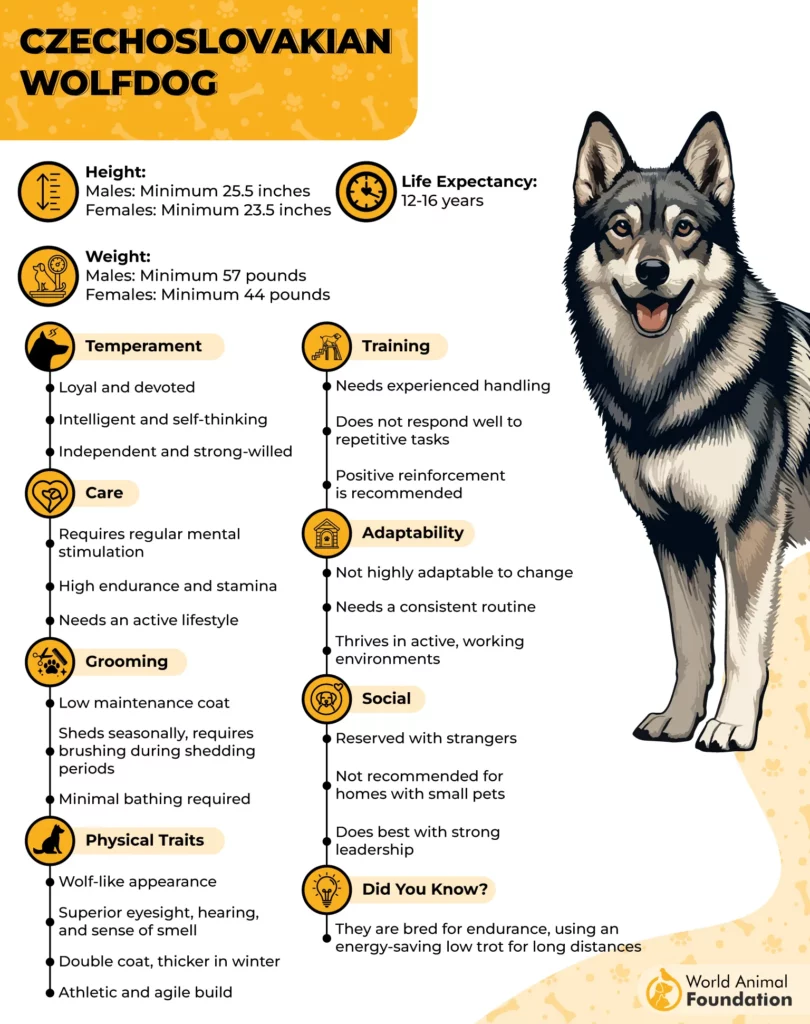
Behavior rooted in the wild
This breed does not respond to praise the way most domestic dogs do. They are independent thinkers with low food motivation and a high prey drive. Obedience isn’t guaranteed — it must be earned through consistent structure and earned trust. Off-leash recall is unreliable, and they do best in highly experienced hands.
Not built for everyone’s backyard
The Czechoslovakian Wolfdog needs stimulation that mimics purpose: tracking, endurance running, and complex problem-solving. In the wrong environment, they can become anxious, destructive, or try to escape — and their escape skills are among the best in the world.
3. Saarloos Wolfdog
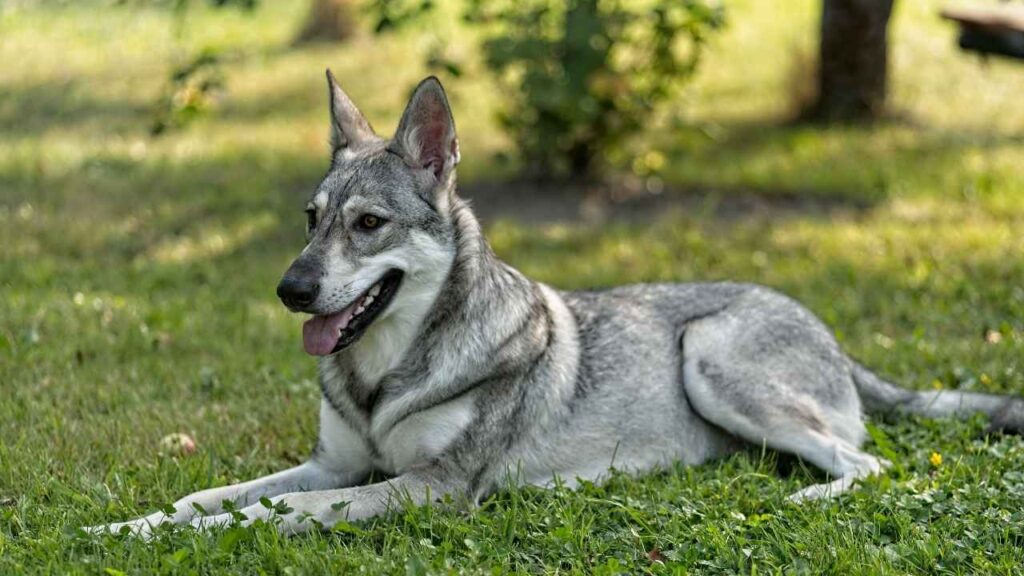
The Saarloos Wolfdog was developed in the 1930s by Dutch breeder Leendert Saarloos, who crossbred a German Shepherd with an Eurasian wolf. His goal wasn’t to create just another pet, but to restore what he saw as lost instincts — alertness, independence, and self-reliance — in the shepherd breed.
Caution over compliance
This breed isn’t driven to please like most domestic dogs. They assess situations before reacting and are more likely to move away than confront danger. Because of this, they don’t respond well to typical obedience training and require a handler who understands canine behavior beyond standard commands.
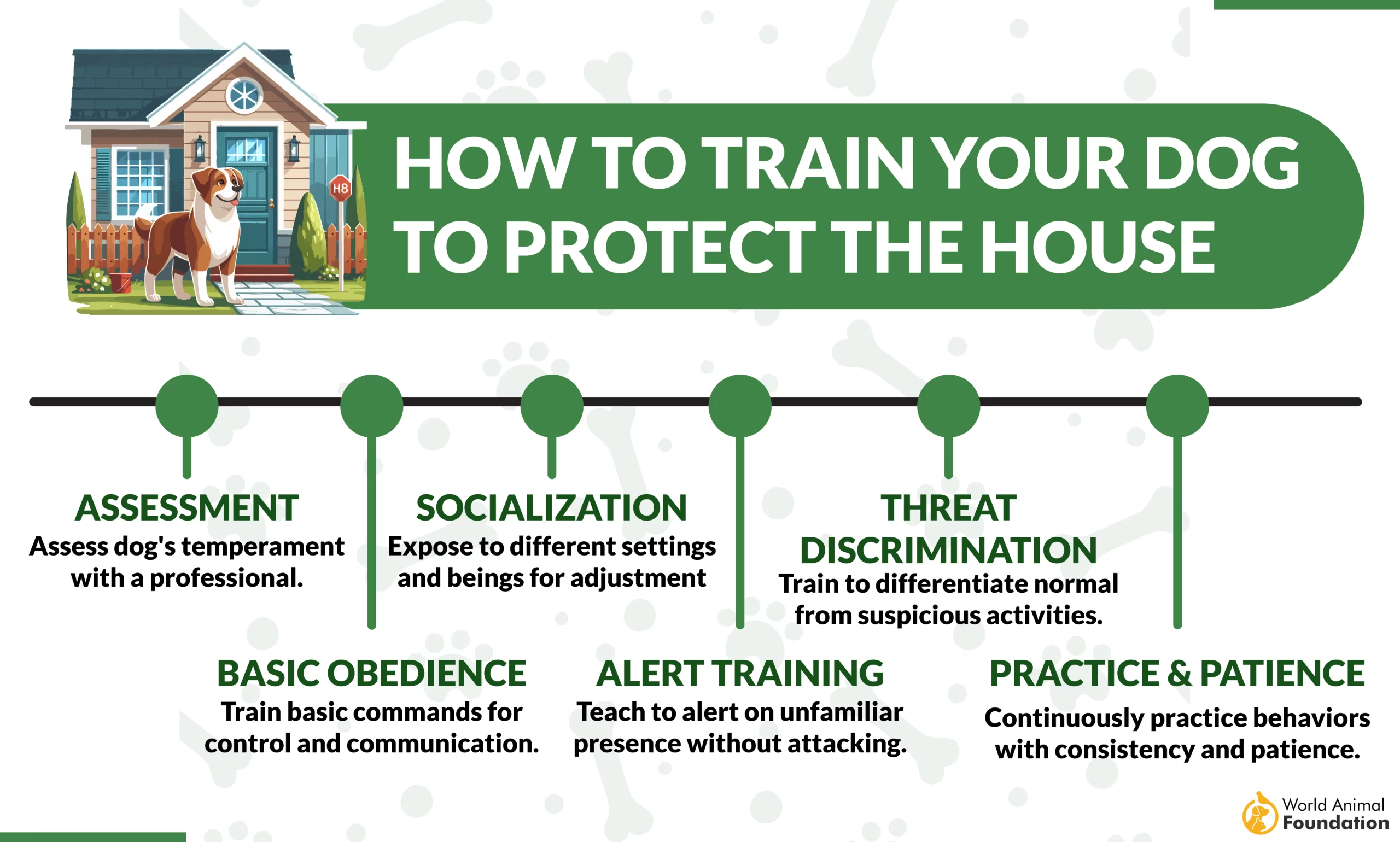
Subtle signals, big message
One of their most distinguishing characteristics is their expressive, wolf-like body language. Saarloos don’t bark much — they communicate through posture and subtle cues. That sensitivity means they may not mesh well with other dogs, especially those that are overly dominant or intrusive.
Built like a wolf, wired like one too
Their endurance is impressive, but they tire of repetitive tasks. The wolf-like features — light frame, long legs, and high stamina — reflect not just their ancestry but their need for varied physical and mental activity. They’re most at ease in environments that don’t overstimulate but still challenge.
4. Tamaskan Dog
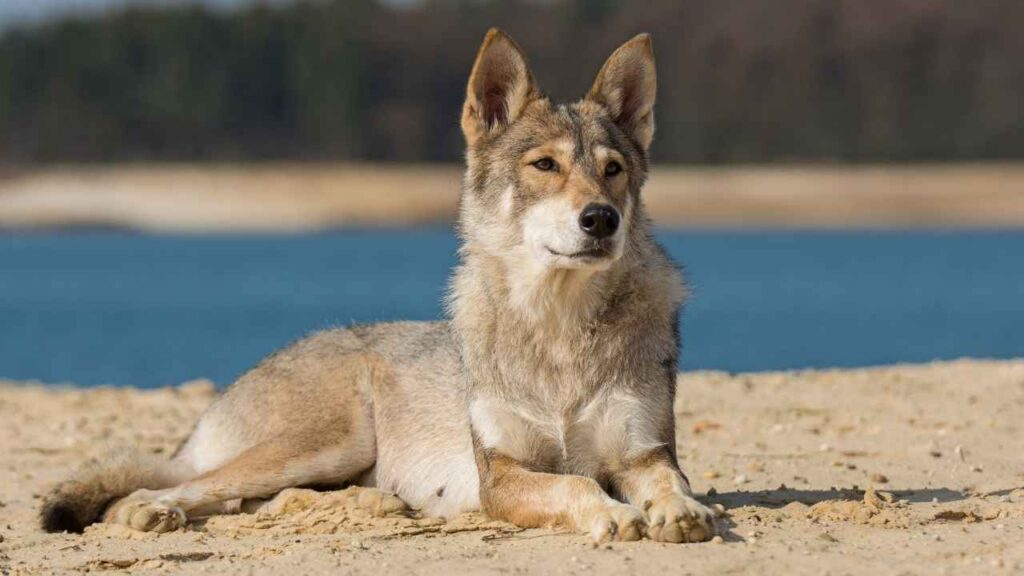
Although often mistaken for a wolf hybrid, the Tamaskan Dog is fully domesticated. Developed in Finland during the 1980s, this breed combines Siberian Huskies, Alaskan Malamutes, and German Shepherds, with careful selection to achieve a striking wolf-like appearance, without any actual wolf content.
Performance-focused from the start
Bred with sledding and working ability in mind, Tamaskans are versatile, task-oriented dogs. Unlike breeds created solely for looks, they were always meant to perform. This means they’re not just physically capable, but also intelligent and quick to adapt when properly trained.
Family-ready, but not furniture
Tamaskans are incredibly loyal, and when raised with the right structure, they fit well into homes with active families. They don’t thrive in boredom — they need time, energy, and variety. Mental enrichment is just as critical as physical exercise for their well-being.
Physically built for endurance
Tamaskans share the agility of sled dogs and the sturdy build of their northern ancestors. Their standout characteristics include a narrow chest, long bushy tail, and alert, almond-shaped eyes — all contributing to their ability to move smoothly over snow or trail.
5. Utonagan
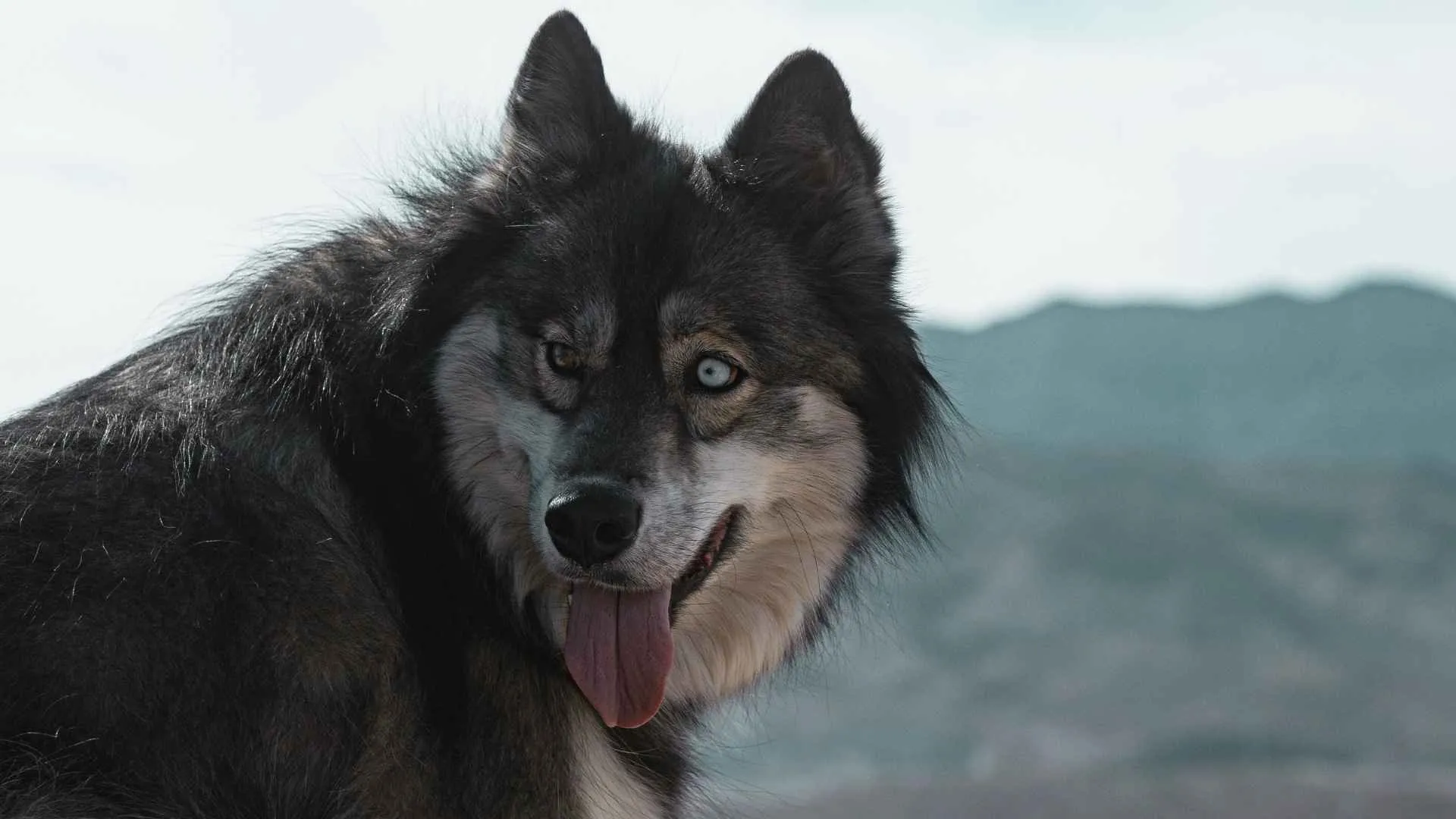
The Utonagan isn’t a product of chance — it’s a deliberate mix of Siberian Husky, Alaskan Malamute, and German Shepherd, designed to resemble a wolf without actually being one. Despite their wild appearance, they were bred entirely for companionship.
Brains wrapped in beauty
This is a highly intelligent breed, picking up on commands quickly and even responding to tone changes in human speech. But that intelligence comes with expectations — they need mental stimulation as much as physical activity, or they’ll invent their own ways to stay busy, which usually means mischief.
Not for the inattentive
Utonagans form deep bonds with their owners, often shadowing them from room to room. They don’t cope well with long periods of isolation. Their emotional sensitivity makes harsh discipline ineffective, so positive reinforcement is the only approach that works long-term.
Social from day one
Early and consistent socialization is crucial. While they’re not naturally aggressive, their size and energy can overwhelm smaller pets or timid people if not properly managed. Group puppy classes, regular outings, and structured interaction help shape their naturally friendly but exuberant nature.
6. Northern Inuit Dog
The Northern Inuit Dog may resemble a wolf at first glance, but it was intentionally developed in the UK in the 1980s to have wolf like traits without actual wolf lineage, as highlined by the American Northern Inuit Society.
Unlike many primitive breeds, they’re bred for companionship, not aggression, making them more manageable in home environments — but still not ideal for casual dog owners.
Training must start early
These dogs are intelligent but independent, so obedience isn’t a given. Structured socialization and boundary-setting from an early age are crucial. Without that, their stubborn streak can take over quickly, especially in multi-pet households. They respond best to confident, calm handlers with consistency in training.
Double coat, double maintenance
Their dense coats are more than just aesthetics — they’re built for cold. This means seasonal shedding is heavy, and brushing is non-negotiable to avoid matting and skin irritation. While they don’t have that typical “dog smell,” upkeep is frequent to keep the coat in good condition.
Best for active, experienced homes
They form strong bonds with their families and are known to be emotionally in tune, but their high energy and need for structure mean they aren’t automatically good pets for every household. Long walks, mental stimulation, and lots of space are essential for a balanced temperament.
7. Canadian Eskimo Dog
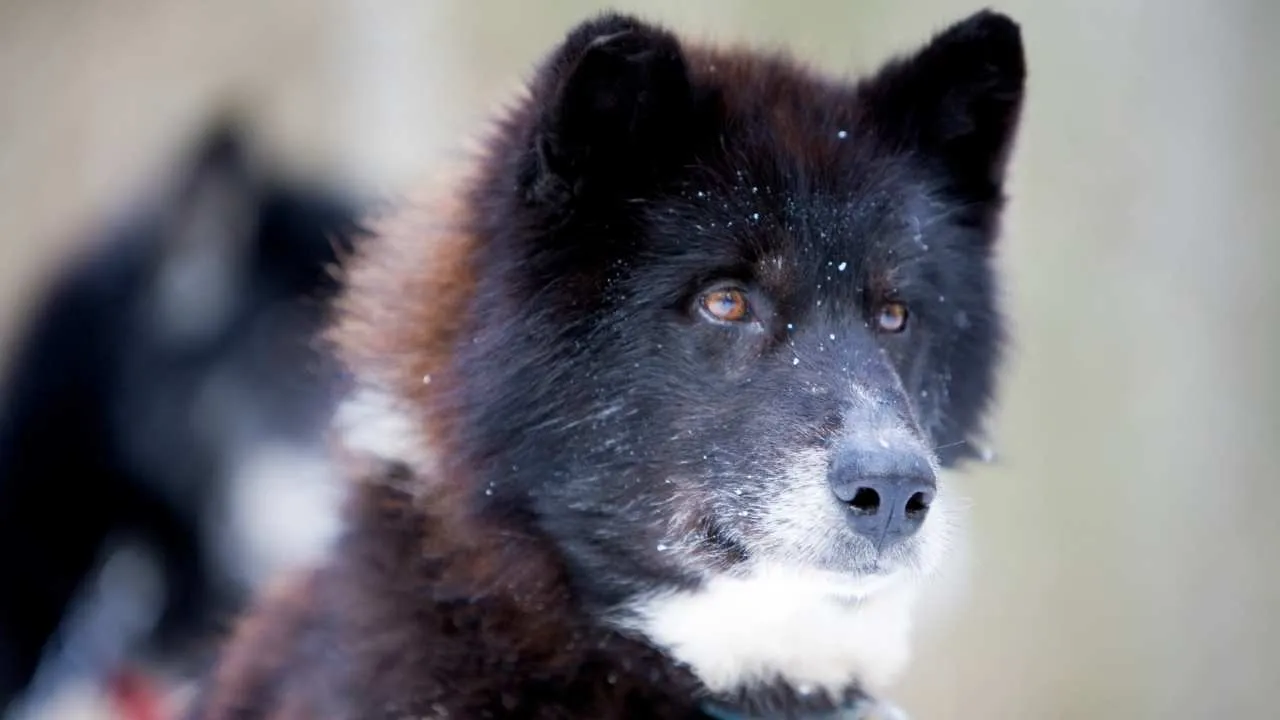
According to CED, the Canadian Eskimo Dog has existed for over 4,000 years, developed by the Thule people for heavy hauling, hunting seals, and even polar bears. Unlike most breeds, these dogs were never intended for casual companionship — they’re built for survival in brutal sub-zero conditions, not suburban comfort.
Physical toughness, emotional sensitivity
They can pull 80 to 120 pounds per dog over long distances. But it’s not just strength — these dogs are unusually vocal, expressive, and form strong bonds with one person. Males can be territorial with other dogs, particularly other males, and this isn’t a breed that does well without consistent leadership.
Cold-resistant and weatherproof by nature
That plush, weather-repelling coat isn’t just for show — it insulates them in harsh artic temperatures. Their thick fur also means they overheat easily and aren’t suited for warm climates. Seasonal shedding is intense, requiring daily brushing during coat blows.
Not beginner-friendly, especially with pups
Training starts early and requires clarity and confidence. With pups, early socialization is critical. They don’t respond to force or frustration — but neither do they bend easily to soft handling. This is a working breed with serious needs, bred with purpose and endurance in mind.
Conclusion
There’s something timeless about dogs that resemble wild wolves. Maybe it’s in their eyes, their posture, or the way they move — always aware, always present. But beneath the primal beauty lies generations of selective breeding, shaping animals that can live alongside us while still carrying whispers of their ancestral past.
These aren’t ordinary pets. From the Canadian Eskimo Dog to the Saarloos Wolfdog, each one shares traits with the wolf species while being distinct, individual companions.
Owning one is a commitment of time, energy, and understanding. But for the right person, it’s also a privilege. These dogs offer not just loyalty, but a window into something older, something wilder.
Whether you admire them from afar at a wolf park or bring one into your life, you’ll never look at dogs the same way again.
Because once you meet one touched by wolf blood, you never forget.


